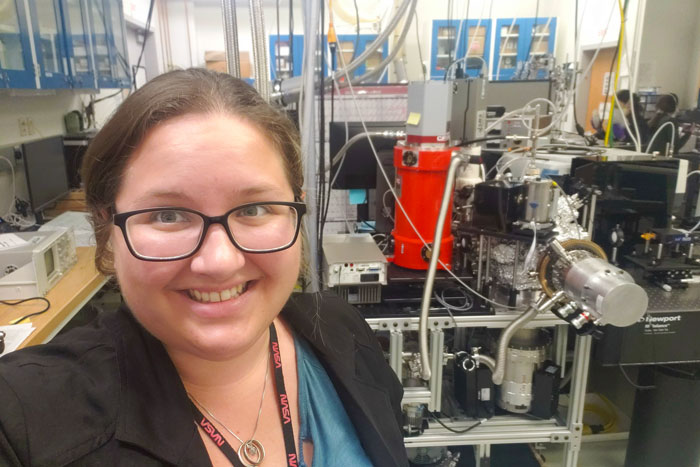Graduate Story: Olivia Harper Wilkins '15, Astrochemist

Not everyone can call a lab at NASA's Goddard Space Flight Center home, but if you're Olivia Harper Wilkins, there's no better place to study astrochemistry.
“Dickinson helped me learn to be brave and resilient when it comes to trying new things. It also helped shape my identity as a scientist. ... Throughout my time at Dickinson my professors encouraged me to incorporate art into my science. Now, I actively use art to communicate science and use my own illustrations in my scientific work whenever I can.”
—Olivia Harper Wilkins '15
A chemistry and mathematics double major at Dickinson, Olivia Harper Wilkins ’15 got her Ph.D. at Caltech and is now an astrochemist at none other than NASA, studying how chemistry evolves in the interstellar nurseries where stars are born. She’s also written and illustrated a book, Astrochemistry, which was published in 2021 by the American Chemical Society (ACS) as a volume of their ACS In Focus series.
Tell us a little more about what you do.
I’m a NASA Postdoctoral Program Fellow at NASA's Goddard Space Flight Center, where I make cosmic ice analogues (a fancy way to say “pretend space ice”) in the lab. We form ice samples under conditions similar to interstellar space, for example at temperatures of 10 Kelvin, or about –440 °F. After blasting the ice with UV light (to simulate the radiation from an infant star), we warm up the sample so that it sublimates, or changes from a solid to a gas. The spectrum, or chemical fingerprint, of the resulting gas shows us what chemicals formed during UV irradiation and thus helps us understand the chemical processes that take place in interstellar space and on solar system bodies like comets.
What was your Dickinson experience like?
My favorite thing about being at Dickinson was having opportunities and support to try things well outside my comfort zone. For example, I never took an astronomy course, but I used my chemistry and mathematics knowledge to work as a summer researcher at the National Radio Astronomy Observatory, which is where I first learned about astrochemistry. I also had lots of opportunities to be creative and embrace interdisciplinarity. I was encouraged to bring my chemistry background into my humanities courses and my love of art into my science ones.
How did Dickinson help you prepare for where you are today?
Dickinson helped me learn to be brave and resilient when it comes to trying new things. It also helped shape my identity as a scientist. For example, before Dickinson, I thought I could be only a scientist or an artist. One of my first-year chemistry labs with Professor [of Chemistry] Amy Witter included sketching cucumber beetles. She appreciated my attention to detail and offered me the opportunity to work in her lab. Throughout my time at Dickinson my professors encouraged me to incorporate art into my science. Now, I actively use art to communicate science and use my own illustrations in my scientific work whenever I can.
TAKE THE NEXT STEPS
Published June 21, 2022